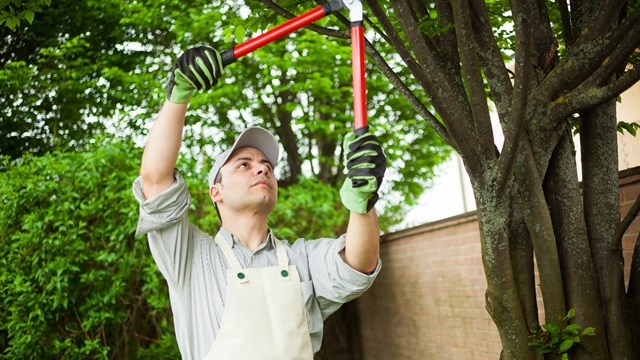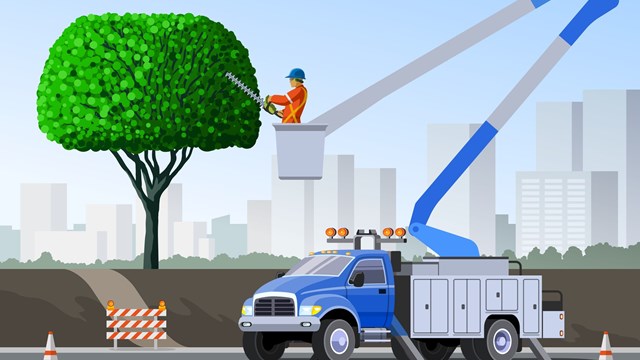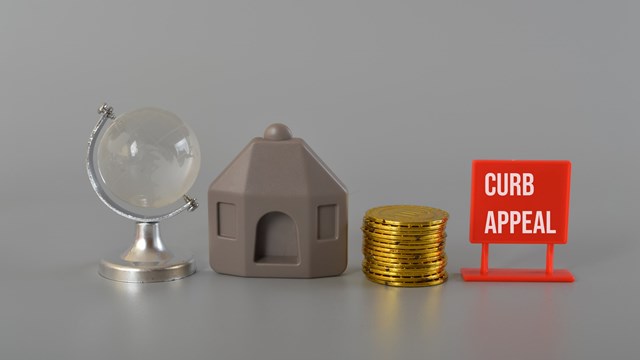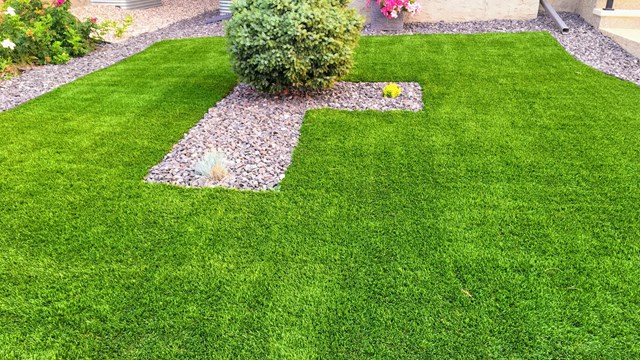The sun stays up a little longer, the breezes are warmer, and the flowers begin to bloom. The signs all point to the arrival of spring, when we can cast off the dreary grayness of winter and look forward to blissful summer days. It is the perfect time to create an outdoor environment that makes the most of the brighter seasons ahead and establishes a space that adds value to any co-op or condo building or community.
One way to achieve that is to work hand-in-hand with a skilled and inspired landscape architect who can take an idea and turn it into a green, lush reality. In order to achieve those optimal results, it’s important for board members, committee members, and managers to establish a strong, productive relationship with their landscape architect – and there are a number of ways to make that happen.
The Process
The first step in finding a landscape architect that can best meet the needs of a particular condo, co-op, or HOA is for the board or landscape committee to look at a broad range of candidates.
“To start, the board should ensure that any architect, designer, or contractor they are entertaining to hire is qualified and has completed a project of that magnitude before,” says Peter Zuccarello of QG Floral & Landscape, based in Whitestone, New York. “Reviews and references from prior clients are very important and helpful to determine the [contractor’s] capabilities and the clients’ satisfaction with the finished product.”
Mimi McKay, Owner and Founder of McKay Landscape Architects in Chicago, says that it is also vitally important to “find a landscape architect with practical experience working with volunteer boards, and who has program experience with similar types of projects. Also, know the size of the firm and who the board will be meeting with.”
Before the first face-to-face encounter with the landscape firm, boards should carefully consider the scope and scale of what they would like to accomplish. Amrish Moolchan of landscaping firm Staying Green in Davie, Florida says, “Know what you want for the community or HOA. The board of the HOA should spend time brainstorming ideas of what they want the community to look like,” as well as how it should function.
Questions to consider, says Moolchan, include: “Does the property need a complete landscape renovation, or just a minor upgrade? Does it need more detail in its landscaping? Does it need to be more function, like walking areas separate from the greenery?”
Ensuring that the landscape architect has the proper experience to successfully undertake a major project also falls under the responsibility of your board and management. “While certifications aren’t required for a landscape contractor, there are certain associations that they can be a part of, such as the Building Owners and Managers Association International (BOMA) or the American Society of Landscape Architects (ASLA),” says Zuccarello. “Most boards typically receive referrals from their property manager, who has either personally worked with the company, or the company is well known within the management company. Reputable management companies have strong requirements for any contractor to work in their buildings.”
Perhaps foremost of those requirements is that of possessing proper and adequate insurance. Says Moolchan, “An HOA community should look to find out whether the landscape professional has all its necessary licenses and insurance to perform the work necessary in the city, country or state in which it operates. They also should inquire whether the landscape professional has an insurance policy that lists the HOA as an additional insured to protect the community from any liability or damages caused by the landscape professional.”
Down to Business
Once a landscape architect or firm has been selected, it is time for the fun part – and occasionally, the most stressful part – to begin: tackling the actual designs. Boards and committee members can help reduce or eliminate any potential headaches by doing some homework before their initial design meetings with the selected pro. For example, says McKay, they can “collect the plat of the survey, site plan and building plans, outline the program and scope, put together an image board and select a board chairperson as the contact.”
Using an image board or collage can help collect and categorize the thoughts, visions, wishes, and desires of the committee members while at the same time providing an important visual starting point for the landscape architect. At the same time, selecting one or two board/committee members to serve as the liaison between the co-op, condo, or HOA and the landscape architecture firm can help reduce confusion and ensure a cohesive, linear approach to the project. As they say, the fewer the cooks in the kitchen, the better the meal at the end.
Zuccarello agrees that having images on hand can help launch a project in a successful direction. “Pictures are always helpful, because one person’s visions aren’t always in line with another person’s,” he says. “Some buildings may have a younger crowd and would like to incorporate seating or lounging areas with barbecues and kitchens for entertainment. Other buildings who have many young children, so they might want to incorporate a play area for the kids.”
Knowing the mechanical and technical details of a building space also is key, especially if the area slated for landscaping is on the roof. “When working with rooftops, there are certain items we need to have answered prior to beginning the design phase,” says Zuccarello. “We need to know the weight bearing capacities, the structural integrity, and ensure that all necessary utilities are taken into consideration with the design intention.”
Bang for the Buck
As with any major project, dollars and cents will help define the outcome. Sometimes, the task of reconciling a grand vision with a more conservative budget is a difficult one. If a building or HOA can reveal their budget for the project, “we will work with them to provide the options that would best meet their needs,” says Moolchan. “In the case where the HOA may not provide us with a budget, we provide various options to them where one option may cost more and may be more sustainable over time, or an option that may cost less and have to be changed frequently.”
Moolchan gives an example of the use of mulch versus rocks. “While mulch may be a cheaper option for garden bed aesthetics, it needs to be replaced at least once or twice per year due to the loss of color, and it tends to either get blown or washed away. On the other hand, although rocks may cost more initially, they come in different colors and sizes, and provide curb appeal similar [to mulch], while being more sustainable.”
Zuccarello reminds boards and managers that although budget considerations are of paramount importance, it is important to the outcome of the project to ensure that adequate resources are dedicated to it. “The client doesn’t always have an understanding of costs,” he says. “Sometimes they tend to go with the lesser proposals, but at the end of they day you get what you pay for. Any landscape design should be looked at as a long-term investment. You don’t want to cut corners.”
In order to help manage costs, McKay advocates providing a range of alternatives for the building or HOA and working to manage people’s expectations from the start. Landscape architects may also suggest installing the project in phases, helping to spread costs out over time. In addition, McKay also adheres to the adage of “reduce, reuse, and recycle, if possible.”
A Solid Investment
The end result of almost every landscape renovation or creation is a lot of happy residents and guests. And financially, the investment almost always pays off in the shorter and longer terms. The impact on property value from updating or overhauling existing landscape elements is “exponential,” says McKay. “There is a 5.5 to 12 percent increase in the value of the property if it’s well landscaped.”
In addition, landscaping can help ease other costs associated with the building. “Thoughtful landscape design can mitigate the effects of stormwater runoff, enhance site drainage, and reduce heat island effect,” says McKay. “Green roofs are beautiful, and they also reduce runoff and cool the building” — all things that add up to a healthier bottom line for co-ops, condos, and HOAs of all sizes and means.
The Curb-Appeal Effect
Says Moolchan, “Boring or unappealing landscape can be a deterrent for any home or community. Aesthetics and curb appeal are the first impression of a home or community. And just as making a good first impression when meeting someone (is important), the attention to details in landscaping can not only increase the value of the property, but also increase the chances for a more efficient and effective marketing strategy of the property.”
“Curb appeal creates an emotional and visceral reaction for both residents and prospects,” says David J. Levy, Owner of property management company Sterling Services, located in Holliston, Massachusetts. “At the entrance, you’re setting the tone for the image you’re trying to create. This impacts both the quality of life of the residents, and the perception of value for prospective residents.” Driving up to a community’s entrance presents to the public and the owners a small taste of what lies behind the gates; that impression is crucial, and cannot be made twice. Landscaping may be a finishing touch in the construction process, but it really defines the brand image for the building or HOA.
The case for updating or investing in the creation of a dynamic, eye-catching landscape design almost sells itself when considering the outcomes. From happier residents to increased interest from prospective buyers and greener, more environmentally healthy outcomes for the property itself — the time and money spent on a solid landscape plan ends up being well worth the effort.
Liz Lent is a freelance writer/editor, and a longtime contributor to New England Condominium.










Leave a Comment